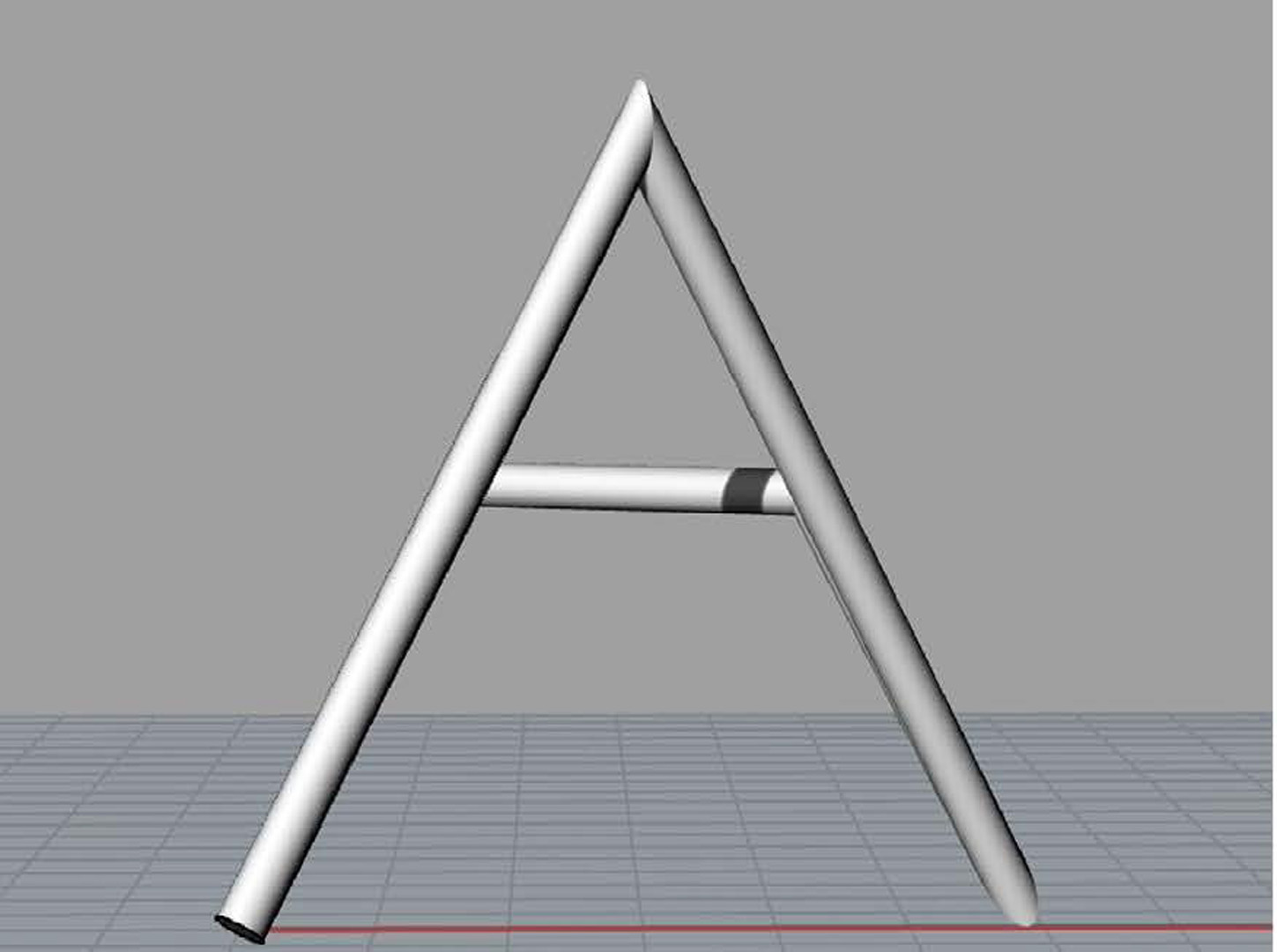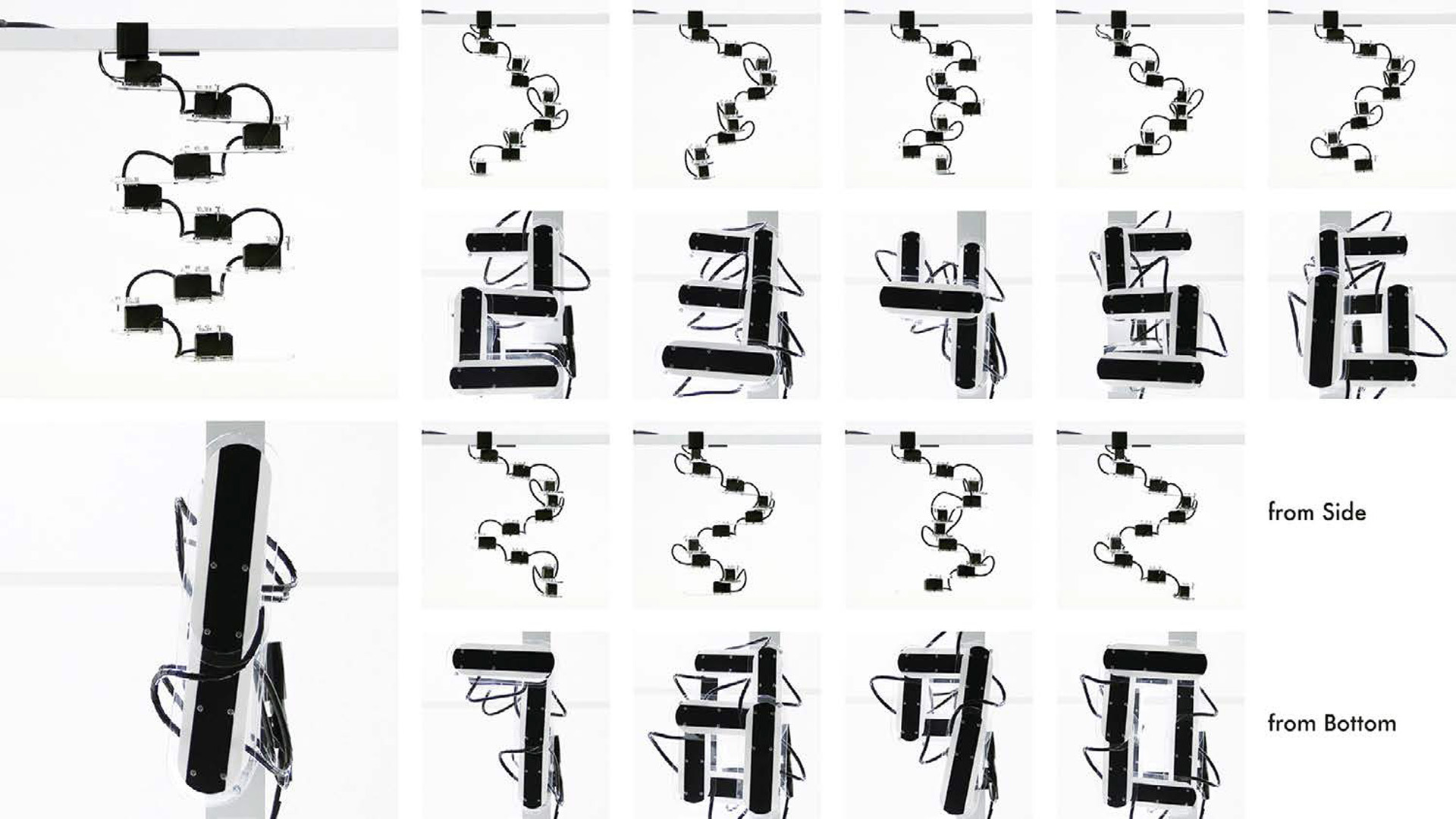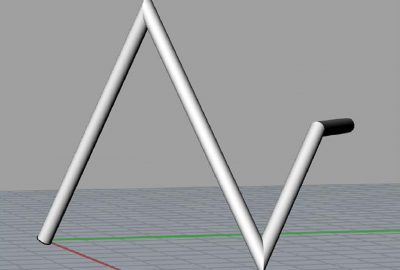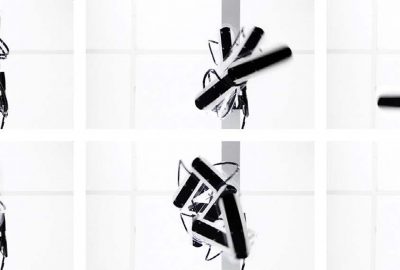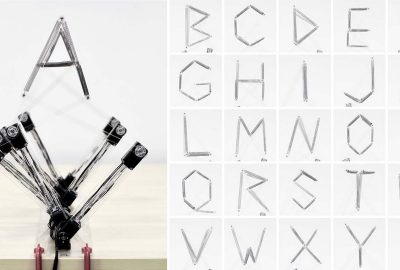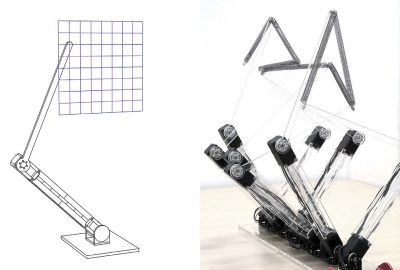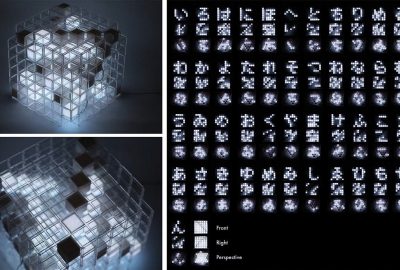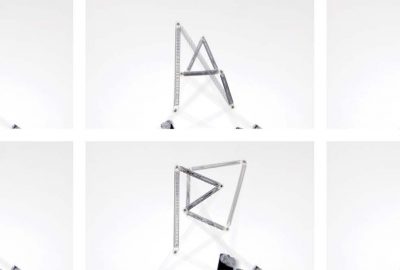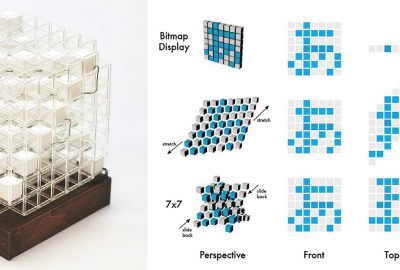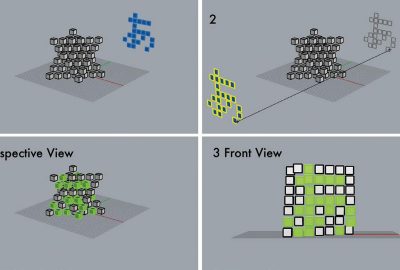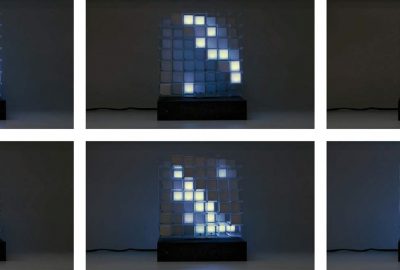“Robotype: Studies of Kinetic Typography by Robot Display for Expressing Letters, Time and Movement” by Katsumoto
Conference:
Type(s):
Title:
- Robotype: Studies of Kinetic Typography by Robot Display for Expressing Letters, Time and Movement
Presenter(s)/Author(s):
Abstract:
Humans use letters, which are two-dimensional static symbols, for communication. Writing these letters requires body movement as well as spending a certain amount of time; therefore, it can be demonstrated that a letter is a trajectory of movement and time. Based on this notion, the author conducted studies regarding multidimensional kinetic typography, primarily using robots to display a letter and visualize its time and movement simultaneously. This paper describes
the project background and design of the three types of robotic displays that were developed and discusses possible expressions using robotic displays.
References:
Yuichiro Katsumoto, “One-stroke,” in Proceedings of ACM SIGGRAPH ASIA 2016 Art Gallery (2016).
Yuichiro Katsumoto, “7×7,” in Proceedings of ACM SIGGRAPH Asia 2017 Art Gallery (2017).
J. Clar, “3D Display Cube” (2003): <www.jamesclar.com/portfolio_page/3d-display-cube-2002-2009/>.
H. Kimura, T. Uchiyama and H. Yoshikawa, “Laser Produced 3D Display in the Air,” in Proceedings of ACMSIGGRAPH 2006 Emerging Technologies (2006).
J.N. Sears, “ e Orb,” in Proceedings of ACM SIGGRAPH Asia 2008 Art Gallery (2008).
Y. Sudo and M. Inakage, “YS-3: Multi-Layered Interactive Animation Device,” in Proceedings of ACMSIGGRAPH 2008 Posters (2008).
7. N. Bernier, “Frequencies (Light Quanta)” (2014): <www.nicolasbernier.com/page/works.htm>.
8. ART+COM, “Kinetic Rain” (2012): <https://artcom.de/en/project/kinetic-rain/>.
9. S. Follmer et al., “inFORM: Dynamic Physical A ordances and Constraints rough Shape and Object
Actuation,” in Proceedings of ACM UIST 2013 (2013).
10. H. Nii et al., “Fuwa-Vision: An Auto-Stereoscopic Floating-Image Display,” in Proceedings of ACM SIGGRAPH
Asia 2012 Emerging Technologies (2012).
11. S. Yoshida, “f VisiOn: Interactive Glasses-Free Tabletop 3D Images Floated by Conical Screen and Modular
Projector Arrays,” in Proceedings of ACM SIGGRAPH Asia 2015 Emerging Technologies (2015).
12. J. Maeda, Maeda @ Media (London: ames & Hudson, 2000).
13. Y. Ahn and G. Jin, “TYPE+CODE II: A Code-Driven Typography,” Leonardo 49, No. 2, 168 (2016).
14. J.D. Boulter and D. Gromala, Windows and Mirrors: Interaction Design, Digital Art, and the Myth of Transparency
(Cambridge, MA: e MIT Press, 2003) pp. 12–15.
15. J. Nimoy, “Robotic Typography” (2002–2004): <http://cdn.jtn.im/robotictype/>.
16. Greyworld, “ e Source” (2004): <http://greyworld.org/>.
17. J. Popp, “Bit.Fall” (2001–): <https://vimeo.com/22396196/>.
18. B. Shapiro, “Pipedream” (1999–2006): <www.taomc.com/pipe-dream>.
19. T. Kimura and Y. Kakehi, “MOSS-xels: Slow Changing Pixels Using the Shape of Racomitrium Canescens,” in
Proceedings of ACM SIGGRAPH 2014 Posters (2014).
20. Y. Sugiura et al., “Gra ti Fur: Turning Your Carpet Into a Computer Display,” in Proceedings of ACM
SIGGRAPH 2014 Emerging Technologies (2014).
21. T. Brook and A. Shaughnessy, Supernew Supergraphics [Unit 16] (London: Unit Editions, 2010).
22. Shigeo Fukuda, Shigeo Fukuda DESIGN Years Old Saiyuki [ggg Books separate volume 6] (Tokyo: DNP
Foundation for Cultural Promotion, 2008) (written in Japanese).
23. T. Medicus, “Emergence Lab” (2015): <http://thomasmedicus.at/emergence-lab/>. 24. DST Robot Co., Ltd.: <www.dongburobot.com/>.
25. N. Kadoma, “Misaki Font” (2006): <www.geocities.jp/littlimi/misaki.htm>.
26. Katsumoto [2].
Additional Images:
- 2018 Art Papers: Katsumoto_Robotype: Studies of Kinetic Typography by Robot Display for Expressing Letters, Time and Movement
- 2018 Art Papers: Katsumoto_Robotype: Studies of Kinetic Typography by Robot Display for Expressing Letters, Time and Movement
- 2018 Art Papers: Katsumoto_Robotype: Studies of Kinetic Typography by Robot Display for Expressing Letters, Time and Movement
- 2018 Art Papers: Katsumoto_Robotype: Studies of Kinetic Typography by Robot Display for Expressing Letters, Time and Movement
- 2018 Art Papers: Katsumoto_Robotype: Studies of Kinetic Typography by Robot Display for Expressing Letters, Time and Movement
- 2018 Art Papers: Katsumoto_Robotype: Studies of Kinetic Typography by Robot Display for Expressing Letters, Time and Movement
- 2018 Art Papers: Katsumoto_Robotype: Studies of Kinetic Typography by Robot Display for Expressing Letters, Time and Movement
- 2018 Art Papers: Katsumoto_Robotype: Studies of Kinetic Typography by Robot Display for Expressing Letters, Time and Movement
- 2018 Art Papers: Katsumoto_Robotype: Studies of Kinetic Typography by Robot Display for Expressing Letters, Time and Movement

